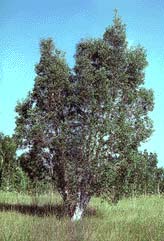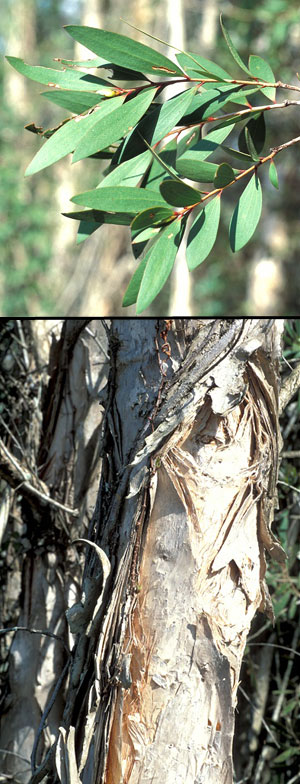PCA Alien Plant Working Group (original) (raw)

- Photographic List
- Complete List
- Annual bastard-cabbage
- Amur corktree
- Asiatic colubrina
- Asiatic sand sedge
- Australian pine
- Black locust
- Black swallow-wort
- Burma reed
- Bush honeysuckles (exotic)
- Canada thistle
- Carrotwood
- Chinaberry
- Chinese lespedeza
- Chinese wisteria
- Climbing euonymus
- Cogon grass
- Common buckthorn
- Common mullein
- Common reed
- English ivy
- Eurasian watermilfoil
- Fig buttercup
- Fire tree
- Fiveleaf akebia
- Fountain grass
- Garlic mustard
- Goutweed
- Giant reed
- Japanese barberry
- Japanese hop
- Japanese honeysuckle
- Japanese knotweed
- Japanese spiraea
- Japanese stiltgrass
- Japanese wisteria
- Kudzu
- Leafy spurge
- Melaleuca
- Mile-a-minute
- Multiflora rose
- Musk thistle
- Oriental bittersweet
- Pale swallow-wort
- Paper mulberry
- Perennial pepperweed
- Porcelainberry
- Princess tree
- Purple loosestrife
- Russian-olive
- Salt cedar
- Siberian elm
- Silk tree
- Smooth cordgrass
- Spotted knapweed
- Strawberry guava
- Tall fescue
- Tree-of-heaven
- Velvet tree
- West Indian marsh grass
- White poplar
- Wineberry
- Yellow Himalayan raspberry
- Yellow starthistle
- Aquatics
- Herbaceous Plants
- Annual bastard-cabbage
- Asiatic sand sedge
- Burma reed
- Canada thistle
- Cogon grass
- Chinese lespedeza
- Common mullein
- Common reed
- Eurasian watermilfoil
- Fig buttercup
- Fountain grass
- Garlic mustard
- Goutweed
- Giant reed
- Japanese knotweed
- Japanese stiltgrass
- Leafy spurge
- Musk thistle
- Perennial pepperweed
- Purple loosestrife
- Smooth cordgrass
- Spotted knapweed
- Tall fescue
- West Indian marsh grass
- Yellow starthistle
- Shrubs
- Trees
- Vines
 NATIVE RANGE
Australia, New Guinea and New Caledonia
NATIVE RANGE
Australia, New Guinea and New Caledonia
DESCRIPTION Melaleuca, also known as paperbark tree, punk tree, cajeput tree, and white bottlebrush tree, is a subtropical tree in the eucalyptus family, with spongy, white, paper-like bark that can grow to 50 feet in height. The 1-2 inch long, gray-green, oval leaves of paperbark tree are arranged alternately along the stem and smell of camphor when crushed. Flowers are white, brush-like spikes and the fruits are small, woody, button-like seed capsules.
ECOLOGICAL THREAT Paperbark tree is an aggressive invader that spreads rapidly, converting native plant communities such as sawgrass marshes, wet prairies, and aquatic sloughs into impenetrable paperbark thickets. In a single year, one paperbark tree can produce a dense island hammock nearly 600 feet in diameter. Its greatest threat is to the Florida Everglades ecosystem, which faces extreme and possibly irreversible alteration as a result of intrusion by paperbark tree and another troublesome exotic, Brazilian pepper (Schinus terebinthifolius).
 DISTRIBUTION IN THE UNITED STATES
The distribution of paperbark tree in the U.S. is currently confined to southern Florida, where it occupies an estimated several million acres, primarily within the Florida Everglades system.
DISTRIBUTION IN THE UNITED STATES
The distribution of paperbark tree in the U.S. is currently confined to southern Florida, where it occupies an estimated several million acres, primarily within the Florida Everglades system.
HABITAT IN THE UNITED STATES Paperbark tree tolerates most subtropical ecosystems, preferring wet to intermittently wet sites.
 BACKGROUND
Introduced into southern Florida in the early 1900s, paperbark tree was widely planted for landscaping and for "swamp drying."
BACKGROUND
Introduced into southern Florida in the early 1900s, paperbark tree was widely planted for landscaping and for "swamp drying."
BIOLOGY & SPREAD About three years after germination, paperbark trees begin to produce and store copius numbers of seeds in closed woody capsules. The seeds are stored until some form of stress, such as frost, fire or human- induced injury, including herbicide, causes the capsules to open. A mature tree can produce more than a million seeds per year and store an estimated 20 million. Seeds of paperbark tree are dispersed by wind and water.
MANAGEMENT OPTIONS Restoration of areas infested with paperbark tree requires a well planned, long term commitment to elimination of all paperbark trees from the site and prevention of reinfestation. The age and extent of an infestation, the availability of people and other resources, and the proximity to open water or wetlands will dictate the type of management best suited for each site. Seedlings can be pulled by hand, especially when the soil has dried out some, small to medium-sized trees can be pushed over, and larger trees may be cut. Resprouting will likely occur after cutting or hand- pulling, requiring follow-up removals or treatment with herbicide.
Chemical Herbicides are usually needed for extensive infestations and mature paperbark trees and may be applied to freshly cut stumps or to girdled trunks. However, as noted previously, herbicide use will cause paperbark tree to release large caches of stored seeds.
Biological Biological control may offer some help in management of this aggressive invader. Several species of Australian snout beetles are being released or evaluated by the U.S. Department of Agriculture. The beetles are specific to Melaleuca and feed on its shoots, reducing the plant's ability to reproduce.
USE PESTICIDES WISELY: ALWAYS READ THE ENTIRE PESTICIDE LABEL CAREFULLY, FOLLOW ALL MIXING AND APPLICATION INSTRUCTIONS AND WEAR ALL RECOMMENDED PERSONAL PROTECTIVE GEAR AND CLOTHING. CONTACT YOUR STATE DEPARTMENT OF AGRICULTURE FOR ANY ADDITIONAL PESTICIDE USE REQUIREMENTS, RESTRICTIONS OR RECOMMENDATIONS.
NOTICE: MENTION OF PESTICIDE PRODUCTS ON THIS WEB SITE DOES NOT CONSTITUTE ENDORSEMENT OF ANY MATERIAL.
CONTACTS For more information on the management of melaleuca, please contact:
- Francois Laroche, francois.laroche at sfwmd.gov
OTHER LINKS
AUTHOR Jil M. Swearingen, National Park Service, Washington, DC
PHOTOGRAPHS
Jim Snyder
Barry A. Rice, The Nature Conservancy, Davis, CA
REFERENCES Florida Exotic Pest Plant Council. 1991. Exotic Woody Plant Control, Ken Langeland, ed.
Mazzotti, F.J., T.D. Center, F.A. Dray, and D. Thayer. Ecological Consequences of Invasion by Melaleuca quinquenervia in South Florida Wetlands: Paradise Damaged, not Lost. http://edis.ifas.ufl.edu/UW123
Randall, J.M. and J. Marinelli. 1996. Invasive Plants: Weeds of the Global Garden. Brooklyn Botanic Garden Club, Inc., Handbook No. 149. Pp. 36
Schultz, D.P., T.W. Barnes, and J.M. Kleen. 1987. Melaleuca control at Loxahatchee National Wildlife Refuge. U.S. Fish and Wildlife Service, Atlanta, GA and Boynton Beach, FL.
Swearingen, J. 2009. WeedUS Database of Plants Invading Natural Areas in the United States: Melaleuca (Melaleuca quinquenervia). http://www.invasive.org/weedus/subject.html?sub=2783\.
USDA, NRCS. 2009. The PLANTS Database (http://plants.usda.gov). National Plant Data Center, Baton Rouge, LA 70874-4490 USA.
Plant Conservation Alliance, Alien Plant Working Group.